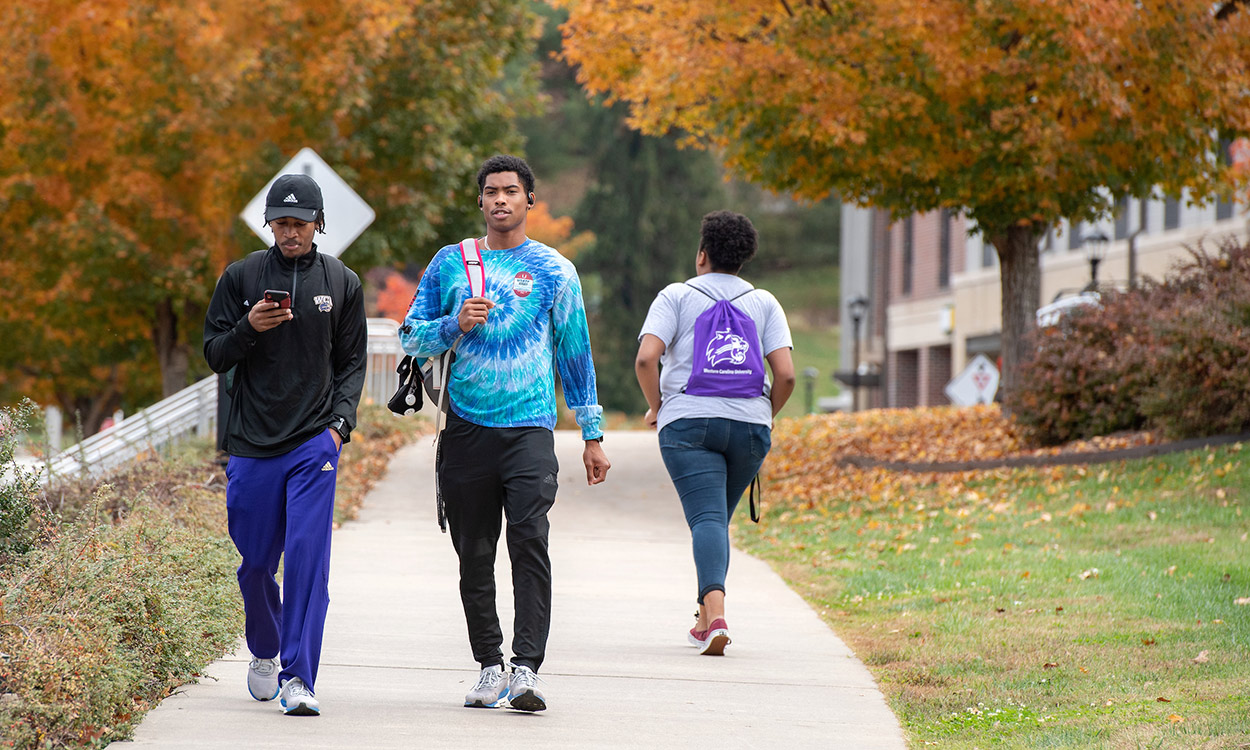The Historical Significance and Contemporary Relevance of Juneteenth
Adam Thomas is an assistant professor of history at Western Carolina University whose research examines questions of slavery, anti-slavery warfare, emancipation, race, gender, memory, childhood and kinship in colonial North America and the early U.S. We asked Dr. Thomas to provide some insight into the historical significance of Juneteenth and what the event means during these times of civil unrest and protest.
Juneteenth (June 19th) first became a day of celebration in Texas in 1865, when 1,800 U.S. troops arrived in Galveston. Their commander, Major General Gordon Granger read aloud General Order no. 3:
The people of Texas are informed that, in accordance with a proclamation from the Executive of the United States, all slaves are free. This involves an absolute equality of personal rights and rights of property between former masters and slaves, and the connection heretofore existing between them becomes that between employer and hired labor … They are informed that they will not be allowed to collect at military posts and that they will not be supported in idleness either there or elsewhere.
For enslaved people present, this was the first news they received of their freedom. One among them, Pierce Harper, described the celebrations enjoyed on that first Juneteenth. Freedpeople “stayed up half the night,” he recalled, “singing and shouting … They weren’t slaves anymore.”1 Technically, they had not been slaves for some time. Granger’s announcement came a full two and a half years after the Emancipation Proclamation supposedly abolished slavery in states like Texas that joined the Confederacy in treason against the United States. It came more than two months even after Robert E. Lee surrendered at Appomattox and John Wilkes Booth assassinated Abraham Lincoln, the Executive mentioned in the Order. News could travel slowly to the more remote edges of the Cotton Kingdom, especially when slaveholders did all they could to suppress it.
A year later in 1866, Black Texans celebrated again, commemorating the anniversary of emancipation with food, music, prayer, and fireworks.2 From this point on, Juneteenth became an annual event—a way for Black communities to demonstrate their free status in a predominantly white society determined to challenge it. Over time a local Texan affair gained wider participation throughout the country. Today, forty-seven states and the District of Columbia observe Juneteenth in some way. In recent weeks, companies from Twitter and Nike to Target and the New York Times have made it a paid holiday.
This last development owes much to the Black Lives Matter protests currently sweeping the nation and the increased attention they have brought to long histories of systemic racism and anti-Black violence. The killings of Rayshard Brooks, George Floyd, Breonna Taylor, Tony McDade, and Ahmaud Arbery are some of the most recent examples of these ongoing trends. More protests are planned for the 19th itself, combining both celebration of Black freedom and continued commitment to realize that freedom fully.
Juneteenth is a particularly appropriate day upon which to recognize the unfinished nature of racial justice work. It differs from other abolition anniversaries once more commonly celebrated in the U.S., such as August 1st (recognizing the end of slavery in British colonies in 1834), and January 1st, (recognizing the Emancipation Proclamation in 1863). While these two dates marked starting points of freedom recognized in law, Juneteenth acknowledges the necessity of claiming freedom in practice even once that law exists. Although Black people in Texas were legally free from January 1863, enslavers could still hold them in bondage through disinformation and violence. It took the arrival of an army to secure a meaningful experience of liberty.
The necessity of that army also offers lessons for the current moment. Slavery did not end because those with power over Black lives decided it should; it ended through the forceful action of a military campaign. That campaign only succeeded because enslaved people fled the Confederacy in vast numbers, enlisted in the U.S. military, and returned to fight their oppressors. After first fatally undermining the Confederate war effort by drastically reducing its labor force, they finished the job through force of arms. The most perceptive chronicler of this moment, W. E. B. Du Bois, referred to their actions as a “general strike”; another historian more recently called it the “greatest slave rebellion in modern history.”3 Both phrases acknowledge the centrality of Black protest to emancipation. Pierce Harper, who described the first Juneteenth above, also reminded his white interviewer of the crucial role Black people played in their own liberation: when they “flocked down on … the Yankee lines … in droves,” the U.S. army “put [them] to work fighting for freedom. They [fought] till the war was over and a lot of them got killed.” Another formerly enslaved Texan, Willis Easter, called the Civil War the “freedom war,” making clear the relationship between struggle and true liberty.4
This commitment to freedom was not unique to U.S. history. From the Haitian Revolution that transformed the most profitable slave colony in the world into a free Black Republic, to the massive uprising in Jamaica in 1831 that inspired Britain’s parliament to end slavery in its colonies, Black protest consistently forced the issue. Speaking on the anniversary of British emancipation, abolitionist Frederick Douglass offered the Jamaican case as an example for Americans to follow. He reminded them that “Power concedes nothing without a demand. It never did and it never will … Those who profess to favor freedom and yet deprecate agitation, are men who want crops without plowing up the ground.”
Today, protestors continue to issue demands and plough that ground. We can see from
the General Order Granger read on that first Juneteenth why their work remains necessary
so long after emancipation. While freedpeople would assert their rights to and secure
a measure of equal citizenship during the postwar Reconstruction period, they faced
significant obstacles. By compelling the formerly enslaved to work only as “hired
labor” for white “employers,” and by assuming they would descend into “idleness” without
white discipline, the U.S. government reinforced a deeply engrained racist view: freedpeople
were always a potentially criminal class unwilling to work without subjugation and
therefore unworthy of political equality. Other predominantly-white institutions exhibited
the same ideology. New police forces, developed directly from slave patrols, set about
circumscribing Black mobility by force.5 New laws enacted in the former Confederate states required freedpeople to enter exploitative
labor contracts for white “employers” or face prison. And the new prisons (many built
on former plantations) either forced Black people to work for the state or sold their
labor to private citizens.6 In Du Bois’ words, it was slavery in “everything but name.”7 This racist criminal justice system, bolstered by constant threat of
white violence from paramilitary organizations and lynch mobs, dogged every step Black
citizens took toward equality.8 The U.S. government’s response was often indifferent. It provided no compensation
for the years freedpeople spent generating white wealth under slavery, and then did
little when, impoverished, thousands died from multiple epidemics following the war.
Despite, or indeed because, of the limits placed upon their freedom, protestors continued to heed Frederick Douglass’ advice throughout the twentieth century. They met Jim Crow segregation in North and South with the Civil Rights and Black Power movements. Most people know activists of this era pursued equal access to the vote and public accommodations, but their demands also included economic equality, community control, and an end to police brutality. And it was not only sit-ins and boycotts that brought change when it came; massive uprisings did too. Like earlier generations who attacked the gains Black people made during Reconstruction, white supremacists rolled back some of the twentieth-century advancements.9 This is why today, in an era of mass incarceration and policing which one scholar terms the “New Jim Crow,” the Movement for Black Lives picks up where these earlier movements left off, making similar demands in its platform.
Scholar and activist Angela Y. Davis argues that understanding the contemporary movement requires acknowledgement of deep connections “between nineteenth-century antislavery struggles, twentieth-century civil rights struggles, and twenty-first century abolitionist struggles.” Freedom, Davis remind us, is a “constant struggle.” Just as U.S. history since 1865 has witnessed continuities in systemic racism, so too has it seen continuous renewal of the fight for freedom, with each phase building on previous ones. The current protests developed from a long tradition, spanning not just Civil Rights and Black Power activism of the twentieth century, but also slave uprisings—including actions Black people took during the Civil War. From the original Juneteenth until today, its observers have commemorated a moment in that long story which truly conveys the unending nature of the fight for justice. Juneteenth recognizes both the promise of freedom but also the ever-present possibility of its overthrow. It celebrates the achievements gained by protest, rather than just law, while rededicating celebrants to the defense of those gains and the pursuit of new ones.
About the Author

Dr. Adam Thomas is an assistant professor of history at Western Carolina University whose research examines questions of slavery, anti-slavery warfare, emancipation, race, gender, memory, childhood, and kinship in colonial North America, the early U.S., Caribbean, and Atlantic World. His current book project compares two 1831 uprisings against slavery—in Virginia and Jamaica—focusing on how enslaved people understood the events, and how memories of them shape contemporary politics.
Prior to joining the faculty at WCU, Dr. Thomas held postdoctoral fellowships at Ohio State University, and was a Visiting Assistant Professor of American Studies at Miami University (Ohio). He has also held fellowships from the Social Science Research Council, Council on Library and Information Resources, American Antiquarian Society, American Philosophical Society, and the Virginia Historical Society. He has published essays in Slavery & Abolition, the Journal of Caribbean History, Women’s Studies Quarterly, Black Perspectives, and edited collections.
References
- Pierce Harper, in Federal Writers’ Project, Slave Narratives: A Folk History of Slavery in the United States from Interviews with Former Slaves, vol. 16, Texas, part 2 (Library of Congress, 1941), 111.
- Shennette Garrett-Scott, Rebecca Cummings Richardson and Venita Dillard-Allen, “‘When Peace Come’: Teaching the Significance of Juneteenth,” Black History Bulletin 76, no. 2 (2013): 19-20.
-
W. E. B. Du Bois, Black Reconstruction in America, 1860-1880 (Free Press, 1998 [1935]), 55-83; Steven Hahn, The Political Worlds of Slavery and Freedom (Harvard University Press, 2009), 55-114.
-
Piercer Harper, Willis Easter, in Federal Writers’ Project, Slave Narratives, 111, 1.
-
Sally Hadden, Slave Patrols: Law and Violence in Virginia and the Carolinas (Harvard University Press, 2001).
-
Alex Lichtenstein, Twice the Work of Free Labor: The Political Economy of Convict Labor in the South (Verso, 1996).
-
Du Bois, Black Reconstruction, 167.
-
Kidada E. Williams, They Left Great Marks on Me: African American Testimonies of Racial Violence from Emancipation to World War I (New York University Press, 2011).
-
Carol Anderson, White Rage: The Unspoken Truth of Our Racial Divide (Bloomsbury, 2016).

